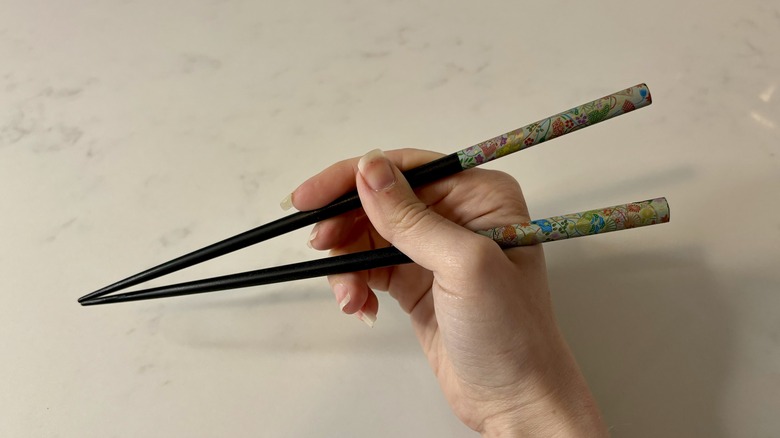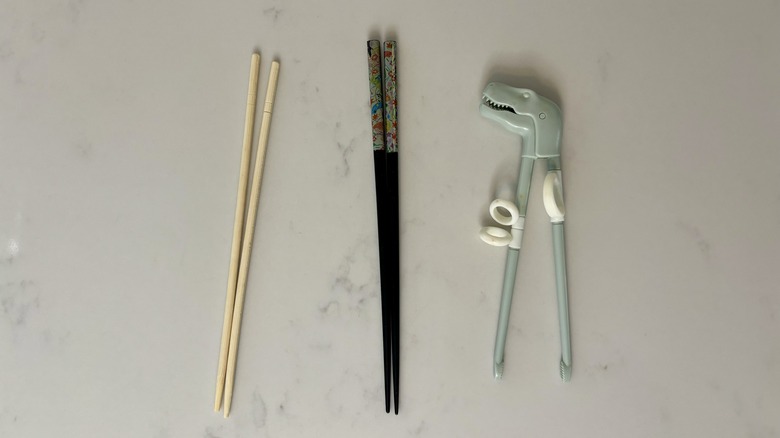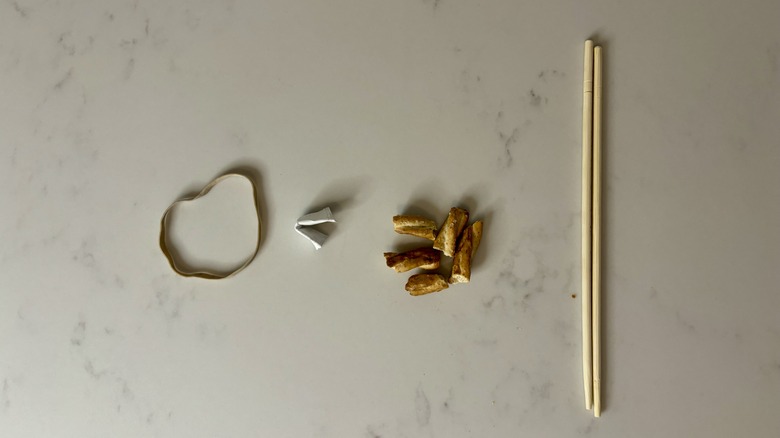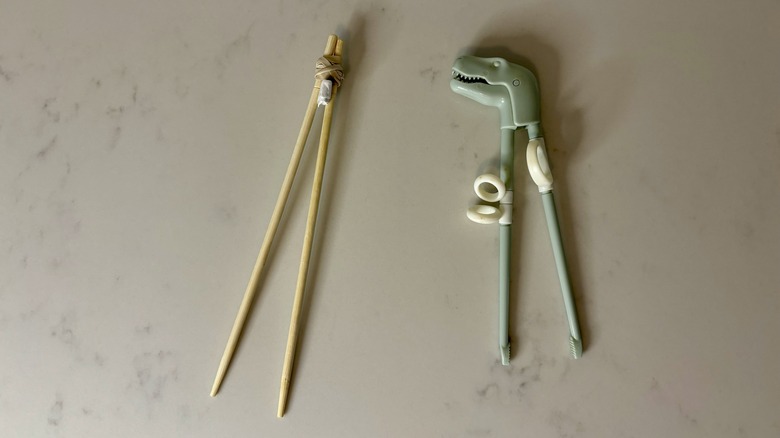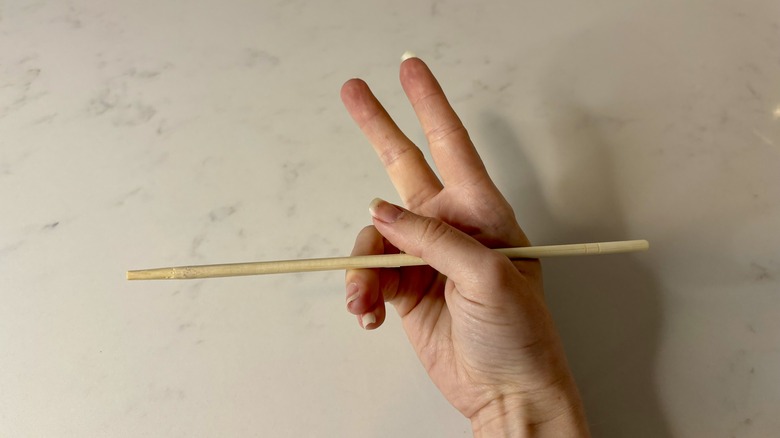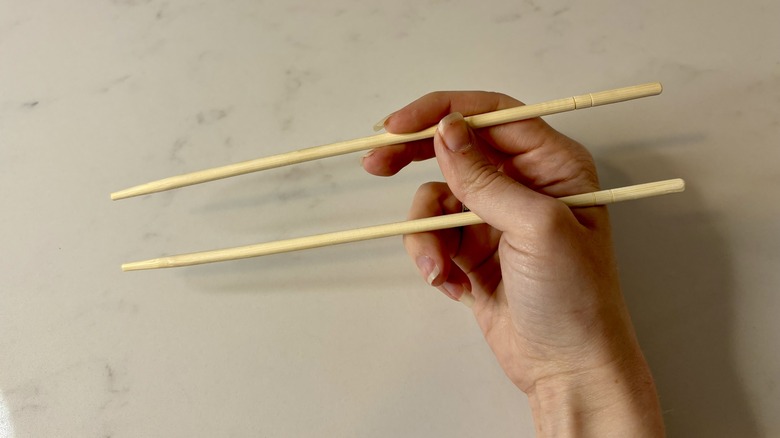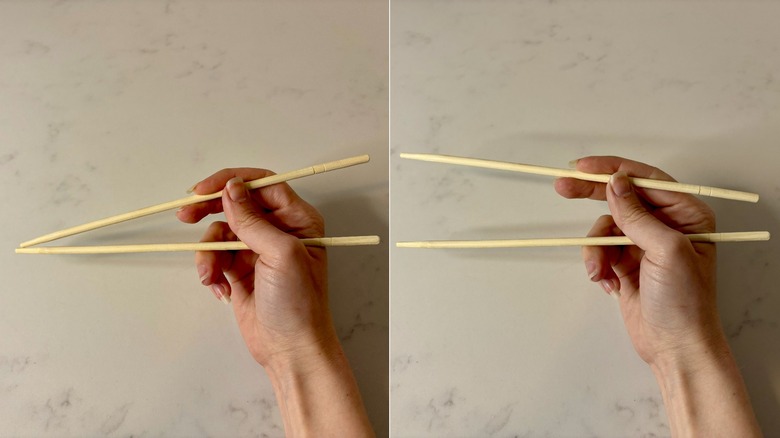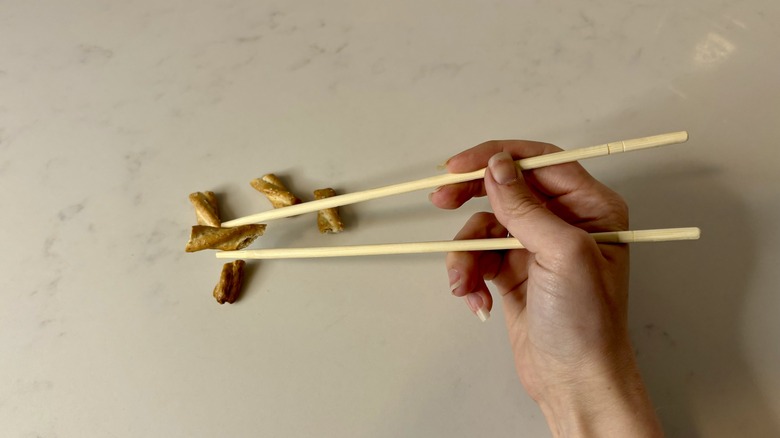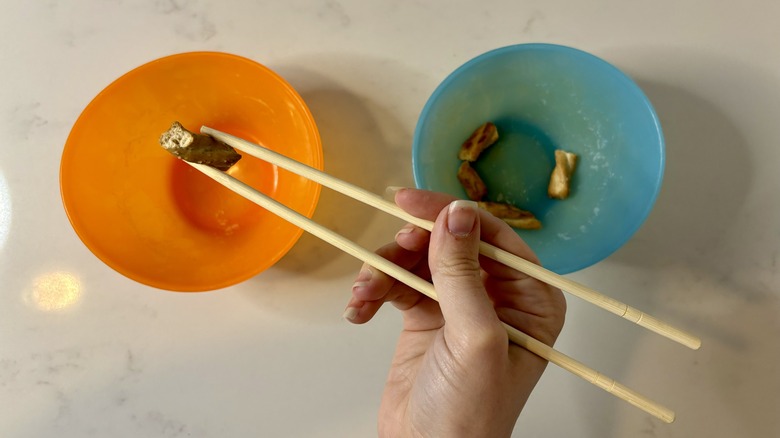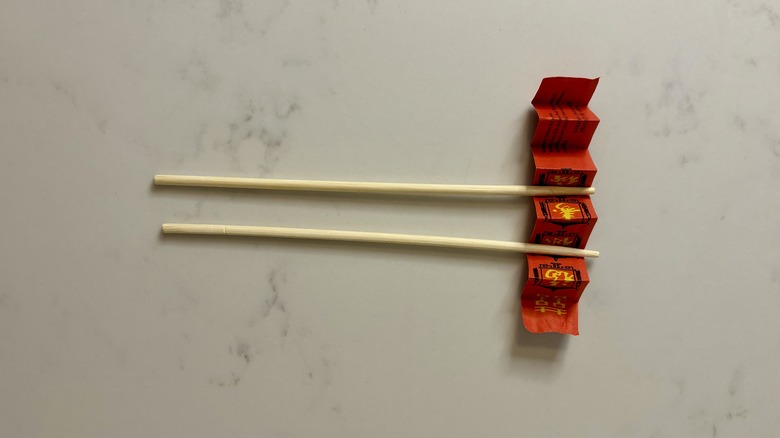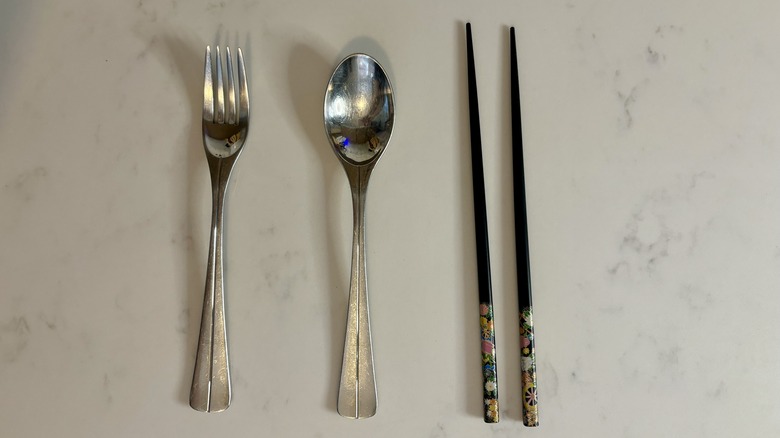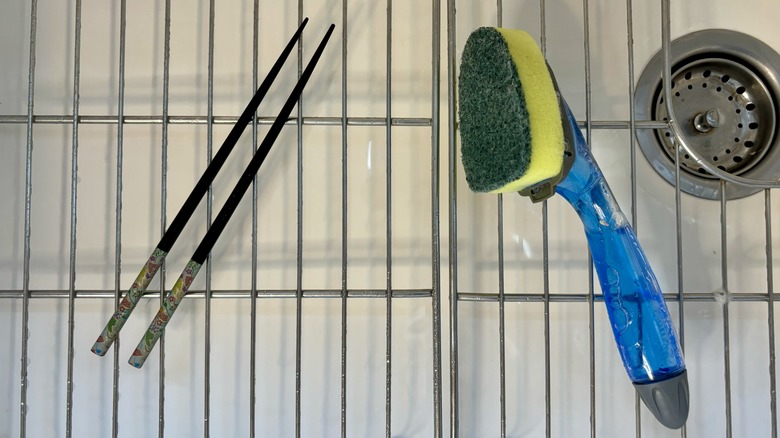How To Eat With Chopsticks And Do It Effortlessly
Many people find using chopsticks intimidating. However, with a little instruction and practice, most people will be able to learn to hold and use chopsticks in no time. If you enjoy eating out at Asian restaurants but wish to use chopsticks more effectively, we have you covered. No more fumbling with your chopsticks or trying to stab your food just to get it in your mouth. There is an easier way to do it.
We do want to mention there is more than one acceptable way to hold and use chopsticks. We will be going over one simple method that is easily approachable for those new to using chopsticks. This method can easily be used with the single-use chopsticks that often come with a take-out order. This holding style will have you eating with chopsticks effortlessly in no time. Once you learn one method, you are welcome to explore the wide range of food and styles available to you.
Different kinds of chopsticks
Many people who are new to using chopsticks don't realize that there are many different styles and lengths of chopsticks. Chopsticks are used widely throughout Asia, but different cultures and areas have their own take on the implements. For example, chopsticks from China tend to be long with tapered ends, whereas Japanese chopsticks tend to be shorter and pointed.
The material, too, differs depending on the area of origin. Chopsticks from Japan and Vietnam are often made of wood, while Korean chopsticks tend to be made of metal. Some even have beautiful designs on them. Of course, as technology has advanced, plastic and alternative materials are now used for chopsticks. Once you get comfortable with chopsticks, it may be worth exploring different styles to find your favorites.
Tools you will need
Using chopsticks only requires two things: Your chopsticks of choice and food to pick up. Anything else is extra. You can opt to practice with non-food items such as cotton balls, or you may wish to use training chopsticks, but these are entirely voluntary. If you have a pair of cheap take-out chopsticks, you have all you need.
Using training chopsticks
While we will focus on using separated chopsticks for this article, if you are new to chopsticks, it could benefit you to use training chopsticks. These are chopsticks that are connected at the top and allow you to practice holding and closing the chopsticks without the risk of them falling. While this makes them easier to use, it can also encourage improper form and make the user reliant on them.
Training chopsticks can be purchased from many storefront and online retailers and are often made for children. However, if you want to try them at home, all you need is a rubber band and a piece of paper. Fold the piece of paper up small, about the size and thickness of two nickels, and place it between the two chopsticks. Then take the rubber band and tightly wrap it around the chopsticks, holding the piece of paper firmly in place.
Place your first chopstick
Hold out your dominant hand with fingers spread. Take your first chopstick and place it in between the thumb and pointer finger. Then, bring your ring finger in enough to allow it to rest around the first knuckle of your hand.
Place your second chopstick
With your hand still in place, pick up your second chopstick. With your dominant hand, hold the chopstick like you would a pencil, pinched between your thumb and forefinger and resting on your middle finger.
Practice moving up and down
Once you have a firm grip, practice moving the second chopstick up and down. The first chopstick should stay in its original position.
Pick up food
Once you feel comfortable with the basic movement, move on to picking up food. This can be any kind of food. Larger pieces are easier to grip initially, such as pieces of tofu or chicken. If you are just practicing, feel free to use chips or small pieces of pretzels like we did.
Practice makes perfect
As with any new skill, practice makes perfect. Continue to practice, even on non-food items. You can use cotton balls or dry beans. A good way to practice is to set up two bowls, one filled with objects and the other empty. Practice transferring the objects from one bowl to the other until you feel comfortable with your new skill.
Some basic chopstick etiquette
If you plan to eat out with chopsticks or around anyone who uses chopsticks in their culture, it is important to understand basic chopstick etiquette. For example, in China, you should not stab your food with your chopsticks. In Japan, chopsticks should not be placed upright in a bowl of rice, as this indicates someone has died.
Where and how you place your chopsticks is also important. In Japan, chopsticks should not be crossed on the table. In Taiwan, chopsticks should not be placed directly on the table. And in Vietnam, chopsticks should not be placed in a "V" shape. Instead, they are often placed on a small tray together. If you are out, you can even fold up your chopstick paper wrapper to create a trivet for your chopsticks. Once you are finished, in some places like Japan, the chopsticks should be placed horizontally, not vertically.
Additionally, it is good form to not point at people with your chopsticks. This is also not a fully comprehensive list of proper chopstick etiquette everywhere, but it should give you an idea and a good starting point.
When to use chopsticks
Many think that chopsticks are used for all foods throughout Asia, but that is not the case. In Korea, for example, chopsticks are not used for rice. In Thailand, chopsticks are used primarily for noodles, never for rice or other entrees. Despite popular belief, not all sushi is frequently not eaten with chopsticks. Not every meal requires chopsticks; learning when it is appropriate to use chopsticks and when to use a fork and spoon will save you embarrassment and make you look like a seasoned pro.
How to maintain your chopsticks
Because there are different kinds of chopsticks, each requires its own care and maintenance to keep it functioning and beautiful. However, there are some general trends. Most chopsticks are not dishwasher safe. Wooden ones definitely should not be put in a dishwasher or submerged in large amounts of water. Instead, rinse the chopsticks and gently wash them with dish soap.
